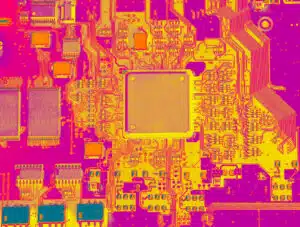Most engineers involved with temperature measurement know there are several methods for measuring temperatures of fluids and solids. The oldest and most common method for measuring the temperature of a fluid such as air is the standard mercury-in-glass thermometer. However, this is not acceptable for measuring surface temperatures of solid objects. For surface temperature … [Read more...]
Radiation Basics: Making Sense of Emissivity & Absorptivity
Introduction This is the second installment in a series of articles that aims to explore a range of practical topics on radiation that are relevant to those of us focused on electronics cooling and thermal design. The last article [3] provided guidance regarding when radiation matters, with examples being natural convection environments, space applications, solar collectors, … [Read more...]
Mitigating Flow Maldistribution in Data Center Two-Phase Cooling Systems with Flow Restrictors
By Serdar Ozguc, Qingyang Wang, Akshith Narayanan, Richard W. Bonner III The Need for Two-Phase Cooling in Data Centers Power usage in data centers account for 1.8% of the overall electricity expenditure in the United States [1] and the cooling infrastructures make up 50% of the total energy consumption of the data centers [2]. Power consumption translates to high … [Read more...]
Choosing the Right Liquid Cooling Quick Disconnects — Key Considerations for Optimal Thermal Management
By Cameron Koller, Marketing Development Manager, Parker Hannifin Quick Coupling Division As technology evolves, one challenge remains constant: heat. Servers, supercomputers, and data centers generate massive amounts of heat, with power densities often reaching 10 to 20 kilowatts per rack and, in some cases, significantly exceeding 50 kW in high-performance computing … [Read more...]
Augmenting Development of Electronics Cooling Technologies with Machine Learning Tools – a Heat Pipe System Example
The traditional pathway for development of thermal management technologies for electronics has been to analyze using heat transfer theory augmented by computational tools such as finite difference or finite element methods, CFD tools, or thermal management system simulation tools, sometimes in tandem with prototype system fabrication and testing. Combining recently available … [Read more...]
- 1
- 2
- 3
- …
- 75
- Next Page »










